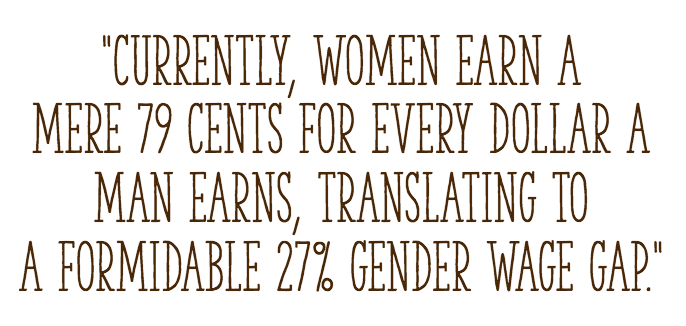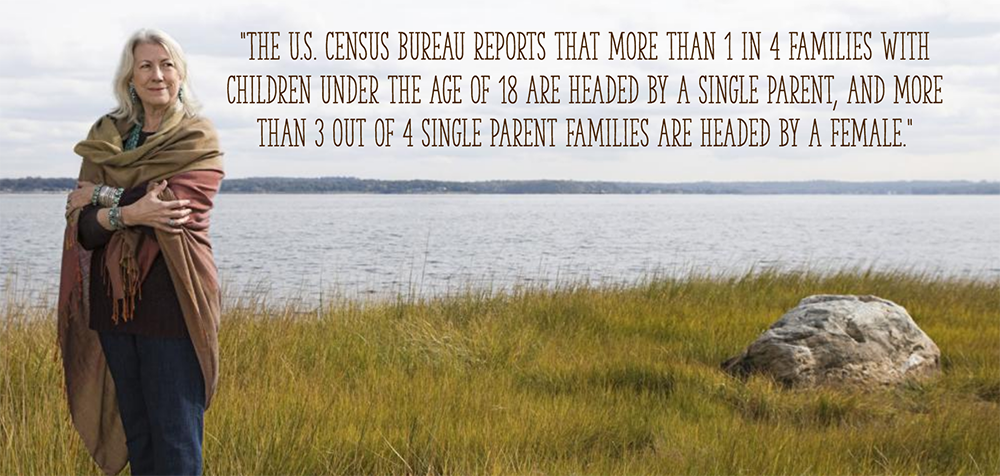Hindsight is 20/20, meaning that it is easier to examine—and determine the correct course of action in—a situation or event after it has taken place. This phrase emphasizes the importance of having foresight, to ensure that rather than lament the mistakes of the past; we make the correct decisions today to create a better tomorrow.
The lessons of hindsight in regards to women continue to be largely overlooked to this day. Women professionals have continually earned less, had less representation and possessed fewer opportunities than men. Currently, women earn a mere 79 cents for every dollar a man earns, translating to a formidable 27 percent gender wage gap. And for African American women and Latinas, who earn 60 and 55 cents for every man’s dollar respectively, the situation is even harder. Do women get to pay less for food and other necessities than men? No, they are forced to live under the same demands and circumstances with fewer means and resources.
Studies show that women pay more than men for most things, from hygiene products to elderly care. The New York Department of Consumer Affairs reports that on average, women’s personal care products cost 13 percent more than men’s. These pricing differences, dubbed the “pink tax,” end up costing women over $1,000 a year. In over 40 states, women even have to pay a luxury tax for tampons; which are a necessity not an extravagance. How else can this be viewed other than women are being taxed merely because of their gender?

These disproportions hinder women’s ability to acquire savings and reach life milestones like independence and buying a home. Women’s paychecks don’t travel as far as men’s, and they wouldn’t even if they were paid the same.
Let’s not forget that the difficulties women endure can have a prolonged and deeply rooted effect on their families and children. The U.S. Census Bureau reports that more than 1 in 4 families with children under the age of 18 are headed by a single parent, and more than 3 out of 4 single parent families are headed by a female. In the U.S., 30.9 percent of families headed by women with no husband present live below the poverty level. Of these, 40.5 percent households have children below 18 years of age and 47 percent have children under five years of age. It’s obvious that the imbalances women endure don’t just pertain to them, they affect us all.
It is vital to realize that women’s disadvantaged circumstances have a huge effect on their future, especially in retirement. An unfair professional arena and a lifetime of higher expenses, coupled with the fact that women have a higher life expectancy than men (86.6 vs. 84.3 years), leave women in dire straits when preparing for retirement.
Shortchanged in Retirement: Continuing Challenges to Women’s Financial Future, a recent report from the National Institute on Retirement Security based on analysis of the 2012 Survey of Income and Program Participation (SIPP) data from the Census Bureau, reveals just how troubling retirement conditions are for women.
The study establishes that American retirement security is built on three factors, Social Security, a pension and personal savings, and asserts that tragically, women are lacking in all three categories. Due to disparities in their earnings, women cannot incur sufficient savings for retirement, they cannot survive on their Social Security alone and for most women professionals in the private sector, employer-sponsored defined benefit (DB) pensions are infrequent.
Unambiguously, the report “examines the labor participation rates of women approaching retirement; women’s access, eligibility, and participation in employer sponsored retirement plans; sources of income for women aged 65 and older; and poverty rates of women aged 65 and older.” The National Institute on Retirement Security presents the following seven key findings:
· Labor force participation among women aged 55 to 64 climbed from 53 percent in 2000, to 59 percent in 2015, with a peak of 61 percent in 2010.
· While women were somewhat more likely than men to work for employers that offered retirement plans in 2012, there is a gap in eligibility that limits women’s participation in these plans. Since 2006, this gap has narrowed and now women and men have the same overall participation rates.
· The share of women working for employers that offered defined contribution (DC) only retirement plans shrank from 49 percent in 2009 to 46 percent in 2012.
· Even though the median household incomes of individuals aged 65 and older has increased, women have 26 percent less income than men.
· Social Security is an important source of income for older households with incomes less than $80,000. Women who are widowed, divorced, and over age 70 rely on Social Security benefits for a majority of their income.
· Women are 80 percent more likely than men to be impoverished at age 65 and older, while women between the ages of 75 to 79 are three times more likely than men to be living in poverty.
· Women in the health care, education, and public administration fields, where DB pension plans are more prevalent, have higher incomes in retirement and lower rates of poverty than in other industries, due to their increased participation in DB pension plans.
As women near retirement age, the deficiencies in their lives come to a head. Some women are unable to retire at 65 with lower lifetime earnings and higher overall expenses forcing them to remain in the workforce for longer.
The abysmal circumstances of today have a profound effect on tomorrow’s women. On the long list of reasons for equal pay and fair pricing on women’s products, retirement security is in bold. With what confidence and security do women mature in age knowing that leaving their jobs is a risky business? This is the power of starting your own business at an early age, so you can work for yourself and create your own destiny.
Should financial advisors suggest people consistently contribute to their retirement funds starting in their mid-20s and extending into their mid-60s? Already a difficult task to undertake, women have the added strains of earning less, commonly sacrificing work to care for family members, working for employers who don’t offer retirement plans and waiting later in their careers to save.
The study’s findings demonstrate that defined benefit (DB) retirement plans benefit women immensely due to their stability and predictability. Retirement plans are necessary; moreover, stable retirement plans for women can better situate them for retiring comfortably.
It can be difficult to implement effective retirement plans for women in all fields and businesses, especially in small companies with limited means. What cannot be understood is the gender pay gap and the added taxes women withstand simply to exist; these can be and need to be changed today.


 Login
Login

